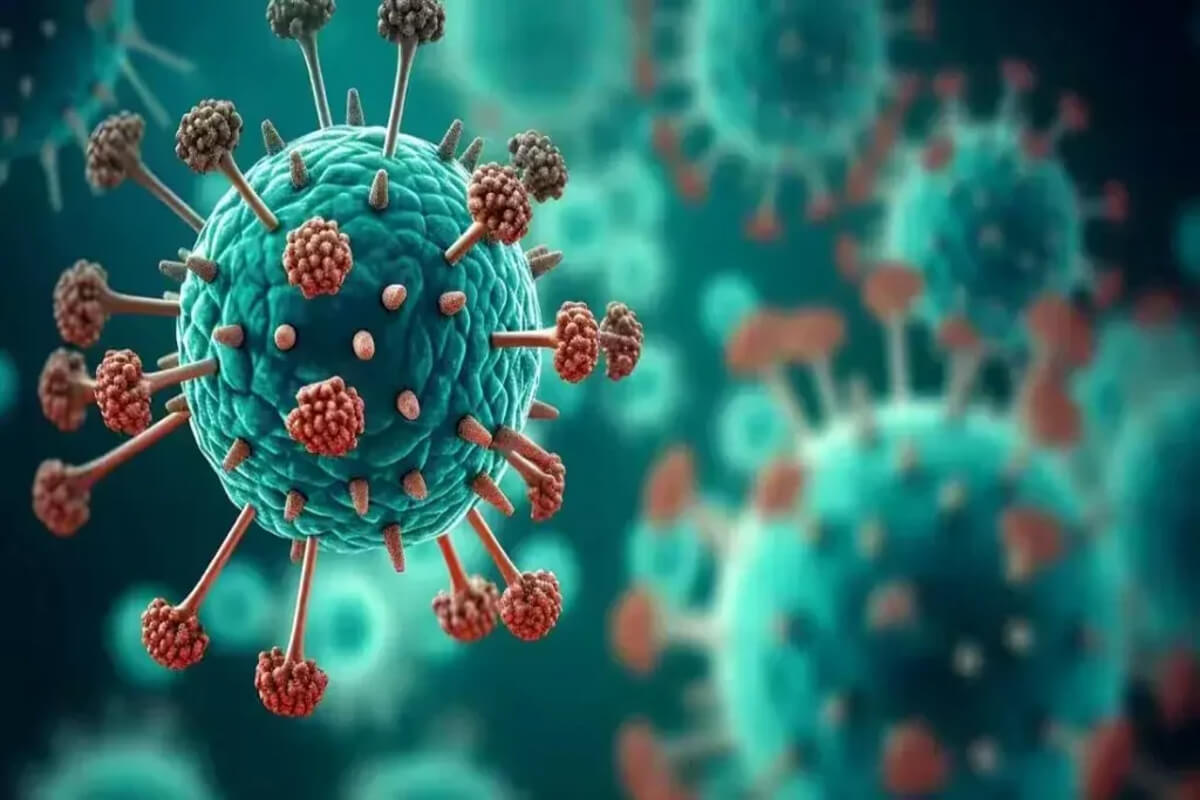As the world continues to recover from the aftermath of the Covid-19 pandemic, China is currently grappling with an outbreak of a different respiratory virus: Human Metapneumovirus (HMPV). Hospitals are reportedly overwhelmed with patients, and there are growing concerns about the virus's impact on public health. HMPV, which can cause flu-like symptoms, is spreading rapidly, leading to fears of simultaneous infections with other viruses like Mycoplasma pneumoniae, influenza A, and Covid-19. In this article, we’ll delve into what HMPV is, its symptoms, prevention tips, and available remedies to help you better understand and manage this viral infection.
What Is HMPV?
Human Metapneumovirus (HMPV) is a virus that primarily targets the respiratory system. Identified in 2001, it belongs to the paramyxovirus family, which includes the respiratory syncytial virus (RSV). HMPV typically causes mild symptoms similar to the common cold or flu, but it can sometimes lead to more serious respiratory infections, including bronchiolitis, pneumonia, or exacerbations of asthma and COPD (Chronic Obstructive Pulmonary Disease). This virus is more common during the winter and early spring months, when respiratory illnesses tend to be at their peak. Despite being a relatively recent discovery, HMPV is already recognized as a significant cause of respiratory infections, especially in children, older adults, and individuals with weakened immune systems.Symptoms of HMPV
HMPV symptoms are often similar to those of the flu or the common cold, which can make it difficult to distinguish between different respiratory infections. The symptoms may affect the upper respiratory system, such as the nose and throat, but can also spread to the lower respiratory tract in more severe cases. Common symptoms of HMPV include:- Cough: This is one of the main symptoms of HMPV and can range from mild to severe.
- Fever: A high fever is common in people infected with HMPV, which often accompanies chills.
- Nasal Congestion: Like many viral respiratory infections, HMPV can cause stuffiness in the nose, making breathing difficult.
- Sore Throat: Throat discomfort and pain are common, especially during the early stages of the infection.
- Shortness of Breath: In some individuals, especially those with underlying respiratory conditions, HMPV can cause significant breathing difficulties.
Who Is at Higher Risk?
Certain individuals are more likely to experience severe symptoms or complications from HMPV. These include:- Young children: Infants and young children, particularly those under the age of two, are more vulnerable to severe respiratory infections caused by HMPV due to their immature immune systems.
- Older adults: As people age, their immune systems weaken, making them more susceptible to severe respiratory infections.
- People with weakened immune systems: Those undergoing chemotherapy, living with HIV, or on immunosuppressive treatments are at increased risk of developing complications from HMPV.
Complications of HMPV
While most people recover from HMPV with supportive care, the virus can sometimes cause severe complications, especially in vulnerable individuals. Some potential complications of HMPV include:- Bronchiolitis: Inflammation of the small airways in the lungs, which is common in young children and can cause difficulty breathing.
- Bronchitis: Inflammation of the bronchial tubes, leading to coughing, wheezing, and chest discomfort.
- Pneumonia: A severe infection of the lungs that can cause significant difficulty breathing, chest pain, and a high fever.
- Asthma or COPD flare-ups: Individuals with pre-existing respiratory conditions like asthma or COPD may experience worsening symptoms and require additional care.
- Ear infections (otitis media): HMPV can cause fluid buildup in the ear, leading to infections, particularly in young children.
Prevention Tips for HMPV
Currently, there is no specific antiviral treatment or vaccine available for HMPV, making prevention the most effective way to protect yourself from the virus. Below are some essential prevention tips:1. Practice Good Hand Hygiene
Washing your hands regularly with soap and water for at least 20 seconds is one of the best ways to prevent the spread of HMPV and other respiratory viruses. If soap and water are unavailable, use an alcohol-based hand sanitizer to keep your hands clean.2. Cover Your Mouth and Nose
Always cover your mouth and nose with a tissue or the inside of your elbow when you cough or sneeze. This prevents the virus from being released into the air and spreading to others. Dispose of tissues immediately and wash your hands afterward.3. Wear a Mask
Wearing a mask, particularly in crowded places or when you are around people showing symptoms of illness, can help reduce the spread of respiratory droplets that may contain the virus.4. Avoid Close Contact with Sick Individuals
Stay away from people who are coughing, sneezing, or showing other signs of illness. If you are sick, try to practice self-isolation to avoid infecting others.5. Disinfect Frequently Touched Surfaces
Common surfaces like doorknobs, light switches, and remote controls can harbor germs. Regularly disinfect these surfaces to minimize the risk of HMPV transmission.6. Don’t Touch Your Face
Avoid touching your eyes, nose, and mouth with unwashed hands, as this is a common way for viruses to enter the body.7. Rest and Self-Isolate When Sick
If you develop symptoms of HMPV, such as fever, cough, and sore throat, stay home to rest and recover. Avoid close contact with others until you are no longer contagious.Remedies for HMPV
There is no specific antiviral treatment for HMPV, so treatment mainly focuses on relieving symptoms and supporting the body’s recovery. Here are some remedies that can help ease the symptoms of HMPV:- Rest: Adequate rest is essential for allowing your body to fight off the infection and recover.
- Hydration: Drinking plenty of fluids, such as water, herbal tea, and broth, can help soothe a sore throat and keep you hydrated while your body fights the virus.
- Over-the-Counter Pain Relievers: Medications like acetaminophen (Tylenol) or ibuprofen (Advil) can help reduce fever and alleviate body aches associated with HMPV.
- Inhalers or Nebulizers: For individuals who experience difficulty breathing, especially those with asthma or chronic respiratory conditions, inhalers or nebulizers can help manage symptoms and ease breathing difficulties.
